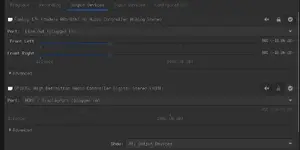Narekatsi
Oriental Orthodox
I've attempted to use Linux as my main OS several times in the past, including a one year streak on a desktop. As I've been mostly using laptops, I have tested distros on and off to find the right candidate to replace Windows. The problem I'm encountering is the lack, or the weak implementation, of high DPI support. Most laptops these days have high resolution screens, so proper fractional scaling is a must to make it usable. Whereas I can set it to 150% or 200% on Windows and everything looks fantastic; even with some fractional scaling options on different Linux window managers, it somehow manages to give me a headache within 15 minutes of use.
I've tried scaling, lowering the resolution, changing refresh rates, copying system fonts from Windows and using those as Linux fonts, but for some reason, nothing seems to help. The second anything leaves the native resolution and default 100% scaling, instant headache.
Has anyone found a "golden distro" (or window manager) that just does a wonderful job at handling high resolution screens and high DPI environments?
I've tried scaling, lowering the resolution, changing refresh rates, copying system fonts from Windows and using those as Linux fonts, but for some reason, nothing seems to help. The second anything leaves the native resolution and default 100% scaling, instant headache.
Has anyone found a "golden distro" (or window manager) that just does a wonderful job at handling high resolution screens and high DPI environments?


